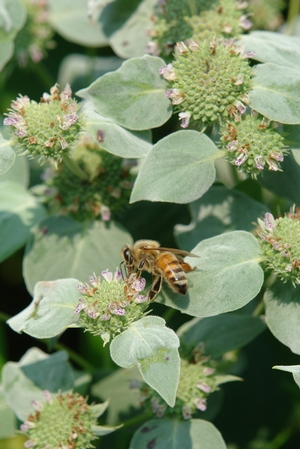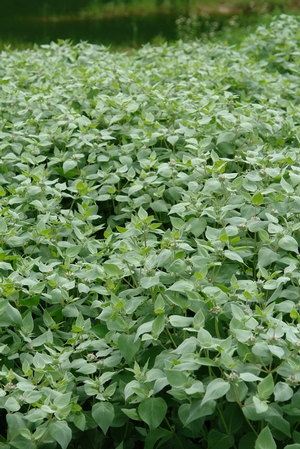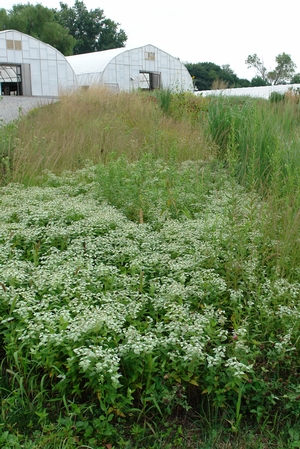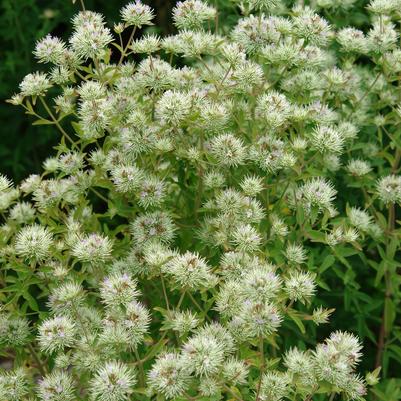





Plant Calculator
Enter the approximate length and width of the area you will be planting and click 'Calculate' to determine how many Pycnanthemum muticum you will need.
Correct and successful spacing is complex and depends on project conditions. We encourage you to call us at 877-ECO-PLUG for project specific recommendations and further assistance.
Pycnanthemum muticum
clustered mountain mint (short-toothed mountain mint)
- Category: Perennial, Native
- Hardiness Zone: 4-8
- Height: 2-3 Feet
- Spread: 2 Feet
- Spacing: 18 Inches
- Bloom Color: White
We give up! So many of you claimed this mountain mint to be superior to Pycnanthemum virginianum that we decided to try it for ourselves. We love it! Its leaves are broader and more lustrous, the bracts are silvery and very showy, the flowers are pinkish and its habit is more compact. Nicely aromatic. This native is happiest at the wood's edge, so it is excellent for a naturalized border or woodland garden. Mountain Mint is one of the best nectar sources for native butterflies, so butterfly gardeners can't do without this one. Our bees go crazy for it, too!
Wetland Indicator Status
| • | Falcutative (FAC) |
Plug Type
| • | Landscape Plug™ |
Propagation Type
| • | Vegetative |
Additional Information about Pycnanthemum muticum
Pycnanthemum muticum is a well-loved mountain mint, by insects and humans alike. Growing 2-3’ tall and spreading quickly, this broad-leaved Pycnanthemum has lustrous foliage and silvery bracts with flowers ranging in color from white to pink to purple. The foliage is very aromatic with its spearmint aroma present even in the dead of winter. Commonly found along a wood’s edge in the wild, it is an excellent choice for a naturalized border or woodland garden where sun transitions to shade. P. muticum blooms in late summer through to early fall and as the sun warms its flowers, the abundant nectar supply and accessible nectaries attracts pollinators from large to small, from sweat bees to flies to skippers to wasps.
A highly competitive workhorse for extreme sites and slopes, P. muticum does well in a variety of sites from full sun to shade and dry to moist conditions. Found from Maine to Texas following the lowlands of the Appalachain Mountains, blunt mountain mint grows in grassy open places, meadows, fields, low woodland areas and occasionally in dry upland woods. Though not overly aggressive, it will spread via rhizomes, so give it room to grow. To ensure a tidier clump, cleave spreading runners with a sharp spade in the spring to maintain size in highly-managed landscapes.
A member of the mint family, the aromatic oils in the foliage make Pycnanthemum very deer and rabbit resistant. Mountain mint contains pulegone which is a natural insect repellant. It is a larval host plant for the Gray Hairstreak Butterfly. Good to incorporate along the perennial border, rain garden, or near the vegetable garden to entice pollinators and best planted in large clumps where insects can easily move from flower to flower. The strong root systems make a tough soil stabilizer that is great for slopes and streambanks.
Growing & Maintenance Tips for Pycnanthemum muticum
A highly competitive workhorse for extreme sites and slopes, P. muticum does well in a variety of sites from full sun to shade and dry to moist conditions. Though not overly aggressive, it will spread via rhizomes, so give it room to grow.

